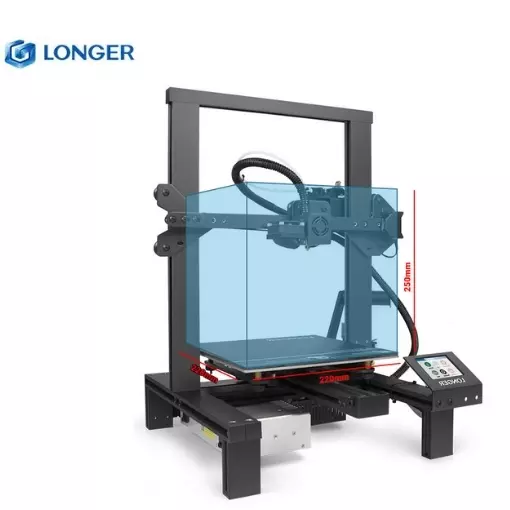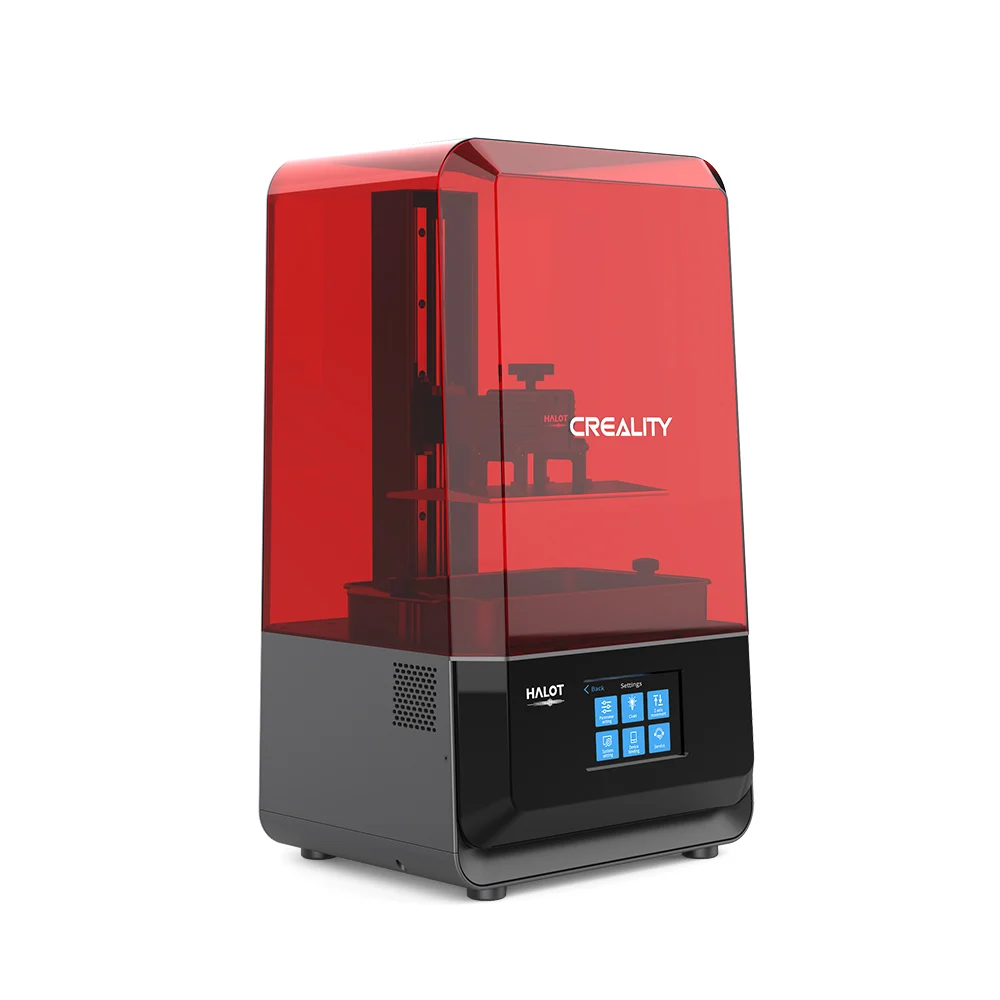Compare LK4 vs Halot Lite
Comparison between the best 3D printers
Choose the best 3D printer at the best price. The cheapest 3D printers are here.
Buy a 3D printer here with 3D Fila.
 |
 |
|
| Model | LK4 |
Halot Lite |
| Printing Material | Filament | Resin |
| Buy Filament for Longer 3D LK4 | Buy Resin forCreality 3D Halot Lite | |
| Estimated price | $200,00 | $400,00 |
| Manufacturer | Longer 3D | Creality 3D |
| Release Year | 2019 | 2021 |
| Print Volume [mm] | 220x220x250 | 192x120x200 |
| Printer Size [mm] | 402x425x505 | 330x301x572 |
| Weight [kg] | 7,8 | 10,6 |
| Power Loss Recovery | YES | NO |
| Maximum Resolution [mm] | 0,1 | 0,01 |
| Processor | 8 bits | |
| Display | Touchscreen TFT 2,8'' | Display touchscreen 5'' |
| Power Supply | 12V / 360W | |
| Connectivity | SD / USB | SD / USB |
| Operating systems | Windows, Mac, Linux | Windows, Mac, Linux |
| Date of registration in the system | 2021-04-15 | 2022-11-04 |
| Release date | 2019 | 2021 |
| Extra features | The Longer LK4 is a versatile 3D printer capable of working with a wide range of filaments, such as PLA, ABS, TPU, copper, wood and carbon fiber, thanks to its 0.4mm nozzle and heated bed up to 110°C. With a printing accuracy of between 0.05-0.4mm, it stands out for its solid construction with an aluminum frame, weighing around 7kg, and a robust 24V and 15A power supply. The kit includes an Allen key, a 7/10 key, a microSD card with USB adapter, a spatula, cable ties, a power cable, 5m of filament and a spare filament end sensor. Assembly is simplified, with around 90% of the equipment pre-assembled, and detailed instructions assist in the process. Special features include print recovery after power failure, a filament end sensor, a super-adhesive printing surface and an intuitive color touchscreen display. The design features smooth profiles for easy assembly, and the position of the filament holder optimizes the filament path to the extruder. The LK4 is a solid choice for 3D printing enthusiasts looking for quality and versatility. | Crealitys Halot Lite printer stands out in the mid-size resin 3D printing segment, with a build volume of 192 x 120 x 200 mm and 50 micron resolution. It offers a monochrome LCD for fast and durable printing, and an upgraded light source that ensures over 80% uniformity across the print bed. It includes Wi-Fi connectivity for remote control and updates, an ARM Cortex CPU for efficient performance, and is compatible with Halot Box and Lychee slicing software. It also has an activated carbon filter to reduce odors. |
| Support for multiple colors and materials (AMS and CFS) | NO | NO |
Notes * |
||
| Cost-benefit | 7 / 10 | 8 / 10 |
| Hardware | 2 / 10 | 1.2 / 10 |
| Tela | . | . |
| Print volume | 3 / 10 | 3 / 10 |
| Performance | 1 / 10 | 9 / 10 |
Conclusion |
| In conclusion, the comparison between the Longer LK4 and the Creality 3D Halot Lite illustrates distinct advantages tailored to different user needs in the 3D printing landscape. The Longer LK4, with its lower price and broader compatibility with various filament types, offers a great entry point for hobbyists or users looking for versatility in material options. It also boasts practical features such as power loss recovery and a user-friendly assembly process, making it a solid choice for beginners and enthusiasts who prioritize ease of use and a robust design. On the other hand, the Creality 3D Halot Lite, while more expensive, provides superior performance in terms of print resolution and efficiency, particularly in resin printing. With its advanced monochrome LCD, enhanced light uniformity, and Wi-Fi connectivity, it caters to users seeking high-quality prints and modern features. Although its build volume is slightly smaller and it lacks power recovery, its performance metrics place it ahead in producing detailed and complex designs. Ultimately, users should weigh their priorities—be it cost-effectiveness and material versatility with the LK4, or high-resolution output and advanced features with the Halot Lite. The decision largely hinges on the specific 3D printing needs and the budget constraints of the user. |

